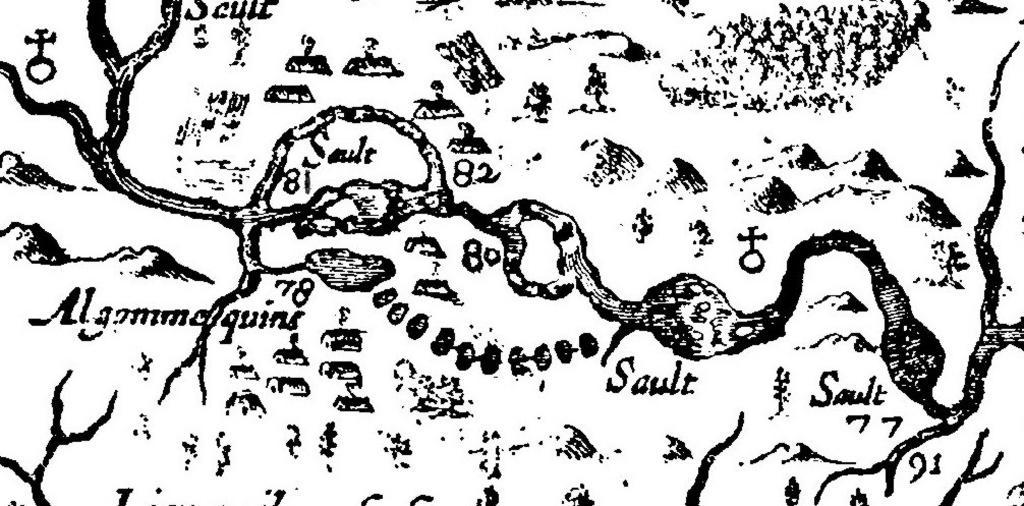MAKE A MEME
View Large Image

| View Original: | Champ1632_82.jpg (1006x497) | |||
| Download: | Original | Medium | Small | Thumb |
| Courtesy of: | commons.wikimedia.org | More Like This | ||
| Keywords: Champ1632 82.jpg en An extract from a map of the eastern reaches of New France showing a portion of the Ottawa River The map was created in 1632 by Samuel de Champlain to show the route he took in 1616 with numbers used to indicate sites he visisted significant rapids and aboriginal encampments In particular Numbers 77 and 91 correspond to the locations of the modern-day City of Ottawa and the Rideau River respectively; Number 80 marks the location of the large rapids south of Calumet Island; Number 81 shows the site of Allumette Island inhabited at that time by members of the Algonquin nation; Number 82 corresponds roughly to the location of the modern-day village of Fort-Coulogne and an Algonquin settlement that existed at the time of Champlain's travels; and To the north the tree and mountain symbols presumably show the large expanses of pine forest fr Carte de l'est de la Nouvelle-France par Samuel de Champlain 1632 - extrait de la portion de la rivière des Outaouais Champlain fait graver en France en 1632 une carte de son trajet réalisé en 1616 sur laquelle il indique à l'aide de chiffres certains sites visités des saults rapides importants ou des campements indiens La position 77 et 91 correspond respectivement à l'actuel emplacement de la ville d'Ottawa et à la rivière Rideau La position 80 de cette carte indique le lieu des grands rapides situés au sud de l'Île du Grand-Calumet La position 81 indique l'emplacement de l'Île-aux-Allumettes habité par les Algonquins La position 82 correspond approximativement à l'emplacement de Fort-Coulonge et y indique un campement algonquin Un peu au nord on note les symboles des montagnes et des arbres indiquant sans doute la présence de forêts de grands pins unknown 1632 Samuel de Champlain PD-old-100 Outaouais Ottawa River 1632 in Quebec 1632 in Ontario Samuel de Champlain 1632 maps Historic maps of Ontario Old maps of Quebec | ||||